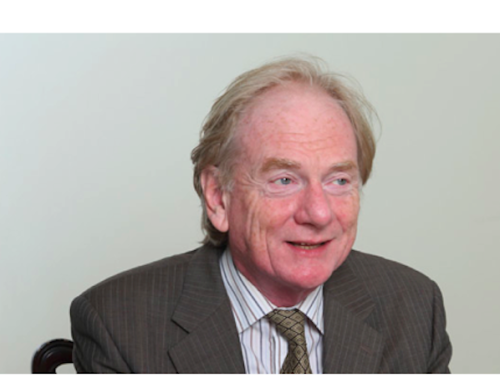Part 2 of the 2 Part Research Report
The American Affluence Research Center has become a recognized authority and a credible source of reliable insight and marketing information about the values, lifestyles, attitudes, and purchasing behavior of America’s most affluent consumers.
Major Findings
Expectations regarding future income and net worth influence and/or correlate with spending plans. For example, the average index for changes in spending plans is 13 points higher (92 versus 79) for those expecting an increase or no change in their income versus those expecting a decline in income. The difference is 29 points (94 versus 65) based on net worth expectations.
With a third of the affluent planning to defer or reduce expenditures during the ext 12 months, this represents a small improvement of 3 percentage points from Spring 2014 and a record low for this reading.
The mood and spending plans of the affluent in September (when stock indexes reached record highs in mid-month) may have been negatively influenced by the increasing global tensions and the resulting volatility and declines in the stock market during October.
Some of the highlights of the special topics covered in this survey include: 97% of the affluent households are forecast to spend an average of $2,623 for December holiday gifts, which is about the same as last year and represents a total of about $31 billion.
On average about 80% of the affluent say they will spend more or the same on holiday gifts this year versus 2013 and 20% say they will spend less. However, it appears the affluent spent in 2013 almost 12% to 24% more than they had anticipated in the Fall 2013 survey, thus supporting the premise that people, especially the affluent, often tend to spend more for gifts than they had planned.
he expenditure per affluent household for gifts is about four times that of all households as estimated by the National Retail Federation (which has forecast a 4.1% increase in total retail holiday gift sales for this year) and by PriceWaterhouseCoopers (which has forecast a 7% decline in holiday gift expenditures).
When given 5 choices as possible priorities for spending discretionary income, about 42% said they prefer to divide the discretionary income among durable goods, and local experiences or travel. This response did not vary significantly among the different demographic segments.
The second most important choice was saving or investing discretionary income, which was cited by 32% of the respondents. The emphasis on saving and investment is consistent with considerable prior research showing the affluent are careful spenders who save aggressively and live within their means.
Among 13 different vacation activities that might be planned for the next 12 months, the top 3 most frequently mentioned activities were return to a favorite destination (53%), use reward points to purchase or upgrade air, hotel, or cruise reservations (52%), and travel with adult children and/or grandchildren (40%).
Plans for making a major expenditure during the next 12 months and the indexes for changes in spending were relatively consistent with the expressed priorities for spending discretionary income. For example, among those whose priority is to save/invest their discretionary income, 62% said they would not acquire any of the 8 major expenditure possibilities.
Affluent and Luxury Consumers are Often Very Different
Given all the discussion of the top 1% and income inequality, when considered in the context of the media focus on extravagant and ostentatious spending by a small number of the wealthy, it would be easy to lose sight of the true profile, values, and motivations of the wealthiest 10% of U.S. households, which new Federal Reserve Board research shows to be approximately 12 million millionaires based on net worth.
In 1995 Dr. Thomas Stanley began to share his years of research among millionaires with his book “The Millionaire Next Door”. In early 2009 he updated his research with the book “Stop Acting Rich…and Start Living Like a Real Millionaire”. The new research was pretty consistent with what Dr. Stanley had found in his earlier research. In other words, over a 30+ year period of research, millionaires continued to display the same profile, values, and motivations.In Dr. Stanley’s research, and in our own research over the past 12 years, we have found there are certain important attributes that most millionaires share.
These attributes include:
• Live within their means
• Careful shoppers who look for good quality and value
• Aggressive savers
• Limited experience with true luxury retailers and brands
Top 4 Ways to Use and Benefit from This Research
If your perceptions of today’s luxury and affluent consumers (who are often very different) are largely derived from what you read in the media and online, you are probably creating your marketing strategies and plans based on false premises. To stay ahead of your competitors, you need AARC’s new research report to understand today’s luxury and affluent consumers and how to market to them.
1. Develop an understanding of the general mood of the affluent and their expectations for business conditions and their personal wealth over the next 12 months. Gives you a basic perspective on general market conditions that will determine marketing opportunities and challenges.
2. Identify changes in the spending plans of the affluent for your specific product category during the next 12 months. Shows you how potential sales of your product category compare to prior years and indicates what competitive pressures may result in your industry.
3. Learn which segments of the affluent market represent the best sales potential for you during the next 12 months. Identifies the market segments that are cutting back on spending and those that are continuing to spend for your product category.
4. Create your marketing and sales plans with data based on the future intentions of the affluent. Unlike many other surveys of the affluent, this is not an extrapolation of past actions that they have been asked to remember and reconstruct.
With this new report, you will learn:
• Spending plans over the next 12 months of both the luxury and affluent consumers (and they are often different)
• Which of 8 major expenditures show the most sales potential and among which segments
• Which of 17 product categories show the most sales potential and among which consumers
• Which segments of the affluent are continuing to spend and which are not (and why)
• What they spent for December holiday gifts and the method of purchasing the gifts
• How they prioritize the spending of discretionary income on vacation travel
• Which of 14 vacation travel activities they plan for the next 12 months
Buy the new Affluent Market Tracking Study #26 with a full money back guarantee. If you are not totally satisfied with the report, your money will be fully refunded with no questions asked.The 58-page/44 exhibit Fall 2014 Affluent Market Tracking Study #26 is available at a price of $495. With a full 109 page set of 65 tables of cross tabulated data, the price is $695.
To order, visit http://affluenceresearch.org/subscribe-contact-us/order-reports/ and tell us which you would like to buy. Please include the purchase price, your name, and the name of your organization. AARC accepts checks and charge cards.
The new 2015 survey will be available Oct. 15th. This study will be based on a sample of people with a minimum $1 million net worth.
You can get details on content and pricing by emailing Ron Kurtz at kurtzgroup@comcast.net.
About the author:
Ron Kurtz is the founder of The American Affluence Research Center, which is a recognized authority on America’s most affluent consumers. His prior experience included 20 years in executive positions in the airline, cruise, and hotel industries. As the founding President of Sea Goddess Cruises, Ron defined the business strategies that led to its recognition as the industry’s finest cruise line. Ron was part of the initial development team and a strategic marketing consultant for 6 years to ResidenSea, operator of The World, which has condominium type apartments that sold for $2 million and up. Ron earned his MBA degree at Harvard Business School and a BBA degree at the University of Texas. A frequent writer for trade publications and speaker at industry functions, he has specialized in and researched the affluent market since 1982. Ron has been a featured speaker at conferences for the cruise, residential resort, fractional ownership, realtor, travel agent, investment, and luxury industries.





